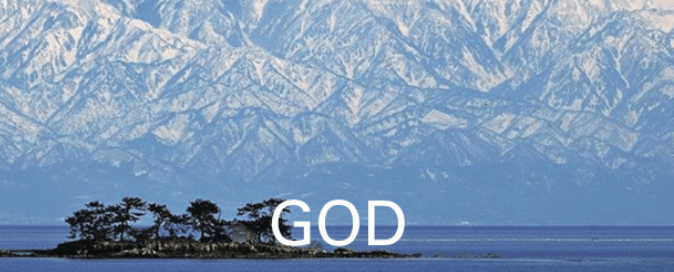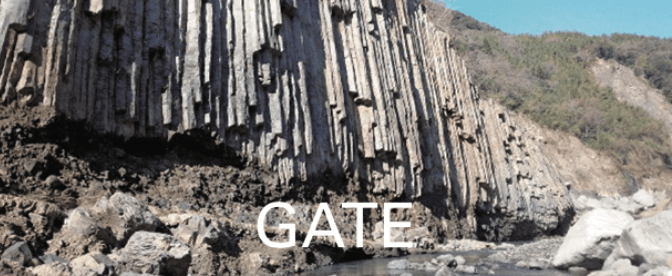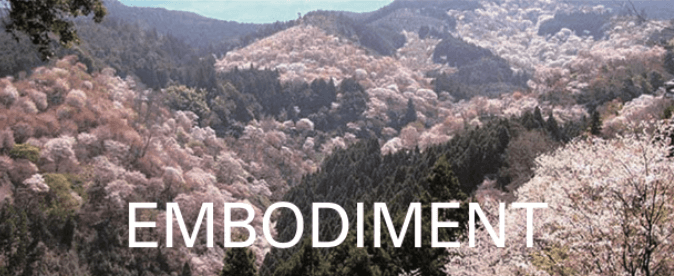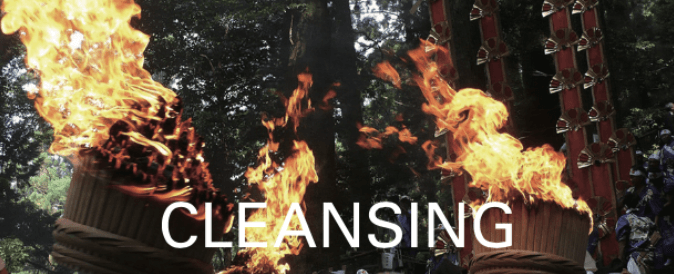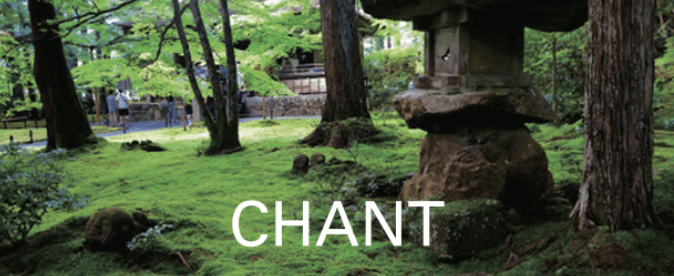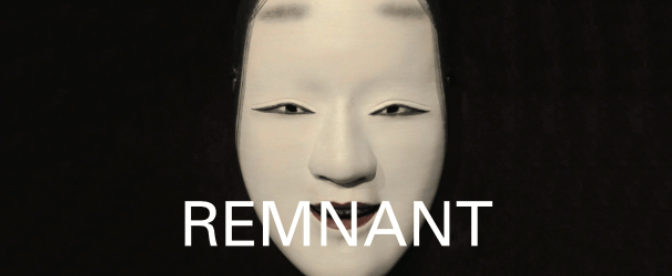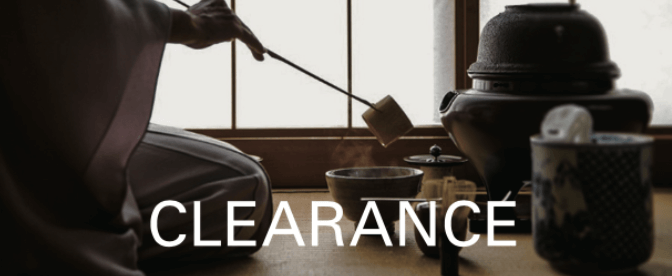
This temple has Hiwadabuki, a cypress bark roof and a hip-roofed building, which conveys the remnant of the court noble residence in the Heian period (794 – 1185). It has elegance, with a sense of freshness. The story of the elegance started when Sakanoue no Tamuramaro (758 – 811), the first Shogun, Great General, met Enchin, a priest of the Buddhist Hosso sect of the early of Heian period (794 – 1185) at Mt. Otowasan.
Enchin came from Yamato Province, Nara and founded the temple at Mt. Otowasan, Kyoto, as the expression of a dream. Tamuramaro became a believer of Kannon, the Buddhist Goddess of Mercy, after meeting with Enchin. After Tamuramaro ruled over Ezo, the northern part of Honshuu Island, and triumphantly returned to Kyoto, he donated his residence to Enchin. Then this elegant temple was created.
Okunoin, Inner sanctuary, overlooks the main temple and stage, where Enchin chanted a prayer for Kannon and performed the ascetic practice of siting under a waterfall.
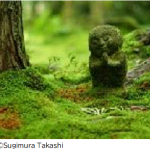
Ohara is located in a small basin that spreads over the countryside at the foot of Mt. Hiei, which used be a village of seclusion for court nobles in Kyoto. They prayed for a peaceful death here. This temple was Monseki Jiin, a temple where the head priest was an Imperial prince who succeeded for generations.
The precincts has green moss laid down on the grounds like felt carpets and the seasonal reflection which invite you to the stage of Shometsumetsui, going beyond life and death before passing away, and Jakumetsuiraku, Freedom from one’s desires.
The garden, Shuuhekien was organized by Kanamori Sowa(1584 – 1657), a master of the tea ceremony and garden designer. Sowa was a son of a samurai lord in the Age of Provincial Wars in the 15th – 16th centuries, and his tea ceremony style was called as Hime Sowa, the tea ceremony style loved by the court nobles in Kyoto. The gardens are as soft and elegant as the tea style of Hime Munewa.
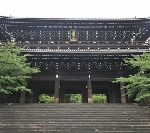
The treasure of this temple is a National Treasure “Honen Shonin Gyojo Ezu” – the picture scrolls of the achievement of Honen Shonin (1133 – 1212), a priest and the founder of the Jodo sect – the first independent sect of Japanese Pure Land Buddhism. This picture scrolls describe the achievements of Honen from his birth to the loneliness and also express his thought, through the Buddhist sermon, the letters and the writings.
The 48 volumes of picture scrolls also include the biographies of his disciples and the achievements of his devotees (emperor/courtier/samurai). It is said that this picture scroll was made by an Imperial order of the Retired Emperor Go-Fushimi (1288 – 1336), by Shujo Hoin (1255 – 1335), a priest of the Tendai sect who converted to the Jodo sect founded by Honen Shonin, at Kotokuin Temple of Enryakuji Temple, Shiga.
The scroll took more than 10 years until completed in 1307. The first half of the scrolls show the style of the court painters in the latter part of the Kamakura period (1185 – 1333).
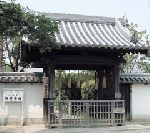
It is said that this temple is “Hama no Yakata” – the Akashi residence of Hikaru Genji, a protagonist of the Tale of Genji. Genji was a superbly handsome man and a genius who lived as an imperial officer. The Tale of Genji is a unique depiction of the lifestyles of high courtiers in the 11th century, by Murasaki Shikibu (973/978 – 1041/1031), a Japanese novelist, poet and court lady.
In the past, reeds and bamboo were overgrown, and it was called Oyabu, a big grove. People did not often pass, and the earthen walls of the temple were lined up, where the ivy was twined with the bamboo.
“Tsutano Hosomichi, – Ivy Lane” in the front of the Sanmon, the main gate of the temple, has been shown as the road through which Hikaru Genji had visited “Okabe no Yakata,” the residence of Lady Akashi. The gate was decorated by Hidari Jingoro, a master sculptor from Akashi Harima Province in Hyogo, who was active around 1596 – 1644 in the beginning of the Edo period. Genji Inari Shrine, is enshrined on the left side of the gate.

This temple was founded by Chogen (1121 – 1206), a Japanese monk devoted the rebuilding of Todaiji Temple. A National Treasure, Jodo-do temple was dedicated to Amida, Amitabha, the principal image of Buddha in Pure Land.
It was designed in Daibutsu-yo, a style of Japanese Buddhist temple architecture during the Kamakura period (1185 – 1333). It uses many beams and joints to support the high ceiling. The principle image of Jodo-do is the standing statues of the Amida triad, by Kaikei, a sculptor of Buddha statues from the Kei school during the Kamakura period (1185 – 1333). Kaikei was familiar with Chogen.
The Jodo-do is located in the western precincts and the statues of the Amida triad are standing to face east. When latticed shutters behind the statues open in the setting sun, the whole Jodo-do turns a deep red and the reservoirs in the distance carry the light of the west. The scenic and space designed was all about the scene of Raigo, the coming of Amida to welcome the spirits of the dead from Pure Land in the west.

This temple was founded in 1533 by Kensho Shonin, which stands with Shatsukei, borrowing the landscape of Tatsunojo Castle. This temple has a complex of buildings, in a row: the main temple, the Kaizando, the hall dedicated to the founding priest, the bell tower, the Sanmon, the main gate of the temple, the Kuri, a temple kitchen, and the Kyakuden, a reception hall, which was the family cemetery of the Wakisaka family, feudal lords of Tatsuno Domain, and their enshrined mortuary tablets.
This temple possesses Nehan-zu, the 1651 painting of the Buddha immediately after his death by Kanou Eino (1631 – 1697): a Japanese painter and a leader of the Kyoto Kanou school of painting. Also in the year 1651, The Keian Uprising took place. It was a failed rebellion against the Tokugawa Shogunate by Yui Shosetsu (1605 – 1651), a military strategist. The Wakisaka Family were members of the Tokugawa Shogunate’s council.
There is a monument inscribed with a poem and Fudezuka, the burial mound of Miki Rofu (1889 – 1964), who came from Tatsuno and was a poet and children’s book author.
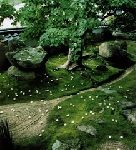
This temple has a beautiful garden, “Sarasoju-en, a sal tree garden”, where a large, 300 year old sal tree stands. The principal image of this temple is the standing statue of Amida, Amitabha, the principal image of Buddha in Pure Land, which is said to have been made by Kaikei, a sculptor of Buddha statues from the Kei school, during the Kamakura period (1185 – 1333).
This temple was founded in 1532 by Kyoyo Shonin, a priest of the Jodo sect. It stands on the site of the villa on the hill, built for Nene Kodaiin (died 1624), the principal wife of Toyotomi Hideyoshi (1537 – 1598), the powerful feudal lord and Imperial Regent who unified Japan. Historical events in China – “Susume Umini Hairite Hamaguri tonaru – Sparrows entering the sea have become clams, which means unexpected changes will happen, and everything will be changeable in time.”
There are sparrow stones and clam stones in the garden. The ambition and the miscalculation – The Toyotomi clan lost the power in the Battle of Sekigahara in 1600.
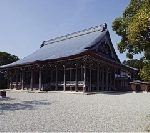
This was the central temple of the Jodo-Shin sect in Echuu Province, Toyama. It originated from the Doyama Gobo Temple founded by Rennyo (1415 – 1499), a head-priest of the Honganji temple, and descendant of Shinran (1173 – 1263), who was the founder of Jodo Shinshu.
The main temple is a huge building measuring about 40m square, which imitated the Amidado of Nishi Honganji Temple, in Kyoto, a temple dedicated to Amitabha, the principal image of Buddha in Pure Land. It is said that it was built on the site of the provincial capital in Echuu Province, with the support of the Maeda family, feudal lord of the Kaga Domain.
The capital in Echuu Province used to be on the Fushiki Plateau, which is near the mouth of the Oyabegawa River, which flows into the Sea of Japan. Otomo no Yakamochi (718 – 785), a counselor in the Imperial court of Japan and a poet, was Kokushu, a governor of a Province, who wrote poems about Toyama Bay from the plateau of the provincial capital.
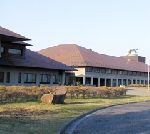
This small gold-copper Buddha is a bronze statue of the standing Kannon: the Buddhist Goddess of Mercy, retaining the appearance of the Asuka Buddha (645-710). This statue, on loan from Sansenji temple in Nagano city, is 29.7 cm in height.
This is one of the oldest Buddhist statues in Nagano prefecture, together with another bronze statue of Kannnon, that one sitting contemplatively in the half-lotus position in Matsukawa village. It’s facial expression is a smile, and the design of the clothes appear to approximate that of the Asuka Buddha.
This museum portrays the relation between nature and people, and praying in the Nagano Basin.
―This bronze statue of the standing Kannon Bodhisattva is exhibited for a limited time.
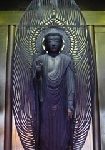
This temple was converted to Pure Land Buddhism in the Kanbun era(1661~1673)during the Edo period, by Matsudaira Yasuteru (1615 – 1675), the 1st lord of Hamada Domain, Iwami Province, Shimane, in order to perform religious rites for the salvation of a departed soul of his mother.
The principal image of this temple is the wooden standing statue of Amida: the principal image of Buddha in Pure Land, which was carved from one piece of cypress, and covered in gold leaf on Japanese lacquer with Gyokugan, eyes made of crystal. Amida of Shuubtsu: a Buddhist image printed in ink on cloth paper, was placed inside a Buddhist statue. It was written in Kana, Japanese syllabary, with Ink, that this statue was made in 1255, at the statue’s hollow interior.
This statue was welcomed later to this temple, which was a model work in the Kamakura period (1185 – 1333), and is National designated cultural property.

The five-storied pagoda of Rurikoji Temple was built by Ouchi Moriharu (1377 – 1431): the Shugo, Governor of Suo and Nagato Provinces, Yamaguchi, and Buzen Province, Fukuoka-Oita, and the 26th head of the Ouchi Family. By building this pagoda, Moriharu performed religious rites for the salvation of the departed soul of his brother, Ouchi Yoshihiro (1356 – 1400) : the Shugo, Governor of Suo and Nagato Provinces, Yamaguchi, Buzen Province, Fukuoka-Oita, Izumi Provice, Osaka, and Kii Province, Wakayama, and the 25th head of Ouchi Family.
Yoshihiro was defeated and died in the Onin War (1467 – 1477), in the controversy over the successor of Ashikaga Shogun between Hosakawa Katsumoto (1430 – 1473) who was Ashikaga Shogun’s deputy, and Yamana Sozen (1404 – 1453) who was Shugo, Governor of Provinces in the western part of Japan. The upper layer of this pagoda is thinner and beautifully harmonized with Hiwadabuki, a cypress bark roof, with a light curvature.
The harmony conveys elegantly Ouchi Culture in Yamaguchi during the the Muromachi Period (1366 – 1573). Sesshu Toyo (1420 – 1506), the Zen monk and the master ink painter who traveled to China, by Kenminsen, envoy ships dispatched to the Ming dynasty (1368 – 1644), by the Ouchi clan, in the year of the Onin War.
After the Onin War ended, Ouchi based Hogyo Harbor, Hyogo and Hakata Harbor, Fukuoka, fought over overseas trade with the Hosokawa clan based in Sakai Harbor, Osaka. The Ouchi clan had eventually monopolized the Kango Trade, licensed trade between Japan and the Ming dynasty (1368 – 1644).
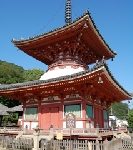
This temple, located at the foot of the Jyodoji Mountain Observatory, is considered to be founded by the Prince Shotoku (574 – 622). This temple enshrines the statue of an eleven-faced Kannnon, the Buddhist Goddess of Mercy and has the cathedral that was attended by the First Ashikaga Shogun, Takauji Ashikaga (1305-1358).
In 1336, Takauji stopped here from Onomichi, before going on to Kyushu in order to recover from the battle and retreats. He chanted 10,000 volumes of the Kannon sutra, to the statue of the eleven-faced Kannon: the Buddhist Goddess of Mercy, and sang 33 waka poems, to realize his earnest wishes.
He successfully recovered and returned from Kyushu Island to Kyoto, the state capital. His earnest prayers came true, from this temple.

This temple is said to have been built in the Tempyo era (729 – 749) in the Nara period (710 – 794). It possesses Hibutsu, a hidden Buddhist image, ordinarily withheld from public view, of the statue of Senju Kannon, the Buddhist Goddess of Mercy with a 1,000 arms, and the statue of an eleven-faced Kannon.
This temple is located at an altitude of 300m overlooking the Wakamiya Basin, which is an eastward alluvial fan, where the sunrise and sunset are fast, creating a large change in temperature.
A sea of clouds comes in the morning, with the moisture, the day before it rains. The sea of clouds wraps Sanmon, the main gate of the temple, and the five-storied pagoda, which has a 350 year history, and Natural Monument junipers, which is the 2m trunk of a tree, and overlooks the buildings of the temple.
